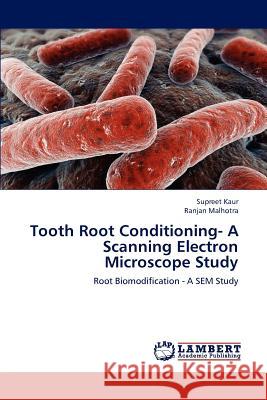Tooth Root Conditioning- A Scanning Electron Microscope Study » książka
Tooth Root Conditioning- A Scanning Electron Microscope Study
ISBN-13: 9783846520765 / Angielski / Miękka / 2012 / 104 str.
One of the important goals of periodontal therapy is the restoration of the lost periodontium and conversion of the periodontitis affected root surface into a substrate, which is biologically hospitable for epithelial and connective tissue cell adherence and attachment. An objective of periodontal treatment is the predictable regeneration of the periodontium in areas previously affected by periodontal disease. Periodontitis affected root surfaces show many changes and the root is commonly referred to as 'pathologically exposed'. The traditional treatment of pathologically altered root surfaces has relied on mechanical removal of plaque and calculus, root bound toxins and contaminated cementum. It is not possible to decontaminate a periodontitis affected root surface completely by mechanical means alone. The instrumented surface will inevitably be covered by a smear layer which is usually comprised of remnants of dental calculus, necrosed root cementum, flecks of hydroxyapatite crystals, microorganisms and their products. The root surface serves as a wound margin during regeneration so it is necessary to rehabilitate the root surface for cell attachment and fiber insertion.
One of the important goals of periodontal therapy is the restoration of the lost periodontium and conversion of the periodontitis affected root surface into a substrate, which is biologically hospitable for epithelial and connective tissue cell adherence and attachment. An objective of periodontal treatment is the predictable regeneration of the periodontium in areas previously affected by periodontal disease. Periodontitis affected root surfaces show many changes and the root is commonly referred to as pathologically exposed. The traditional treatment of pathologically altered root surfaces has relied on mechanical removal of plaque and calculus, root bound toxins and contaminated cementum. It is not possible to decontaminate a periodontitis affected root surface completely by mechanical means alone. The instrumented surface will inevitably be covered by a smear layer which is usually comprised of remnants of dental calculus, necrosed root cementum, flecks of hydroxyapatite crystals, microorganisms and their products. The root surface serves as a wound margin during regeneration so it is necessary to rehabilitate the root surface for cell attachment and fiber insertion.











